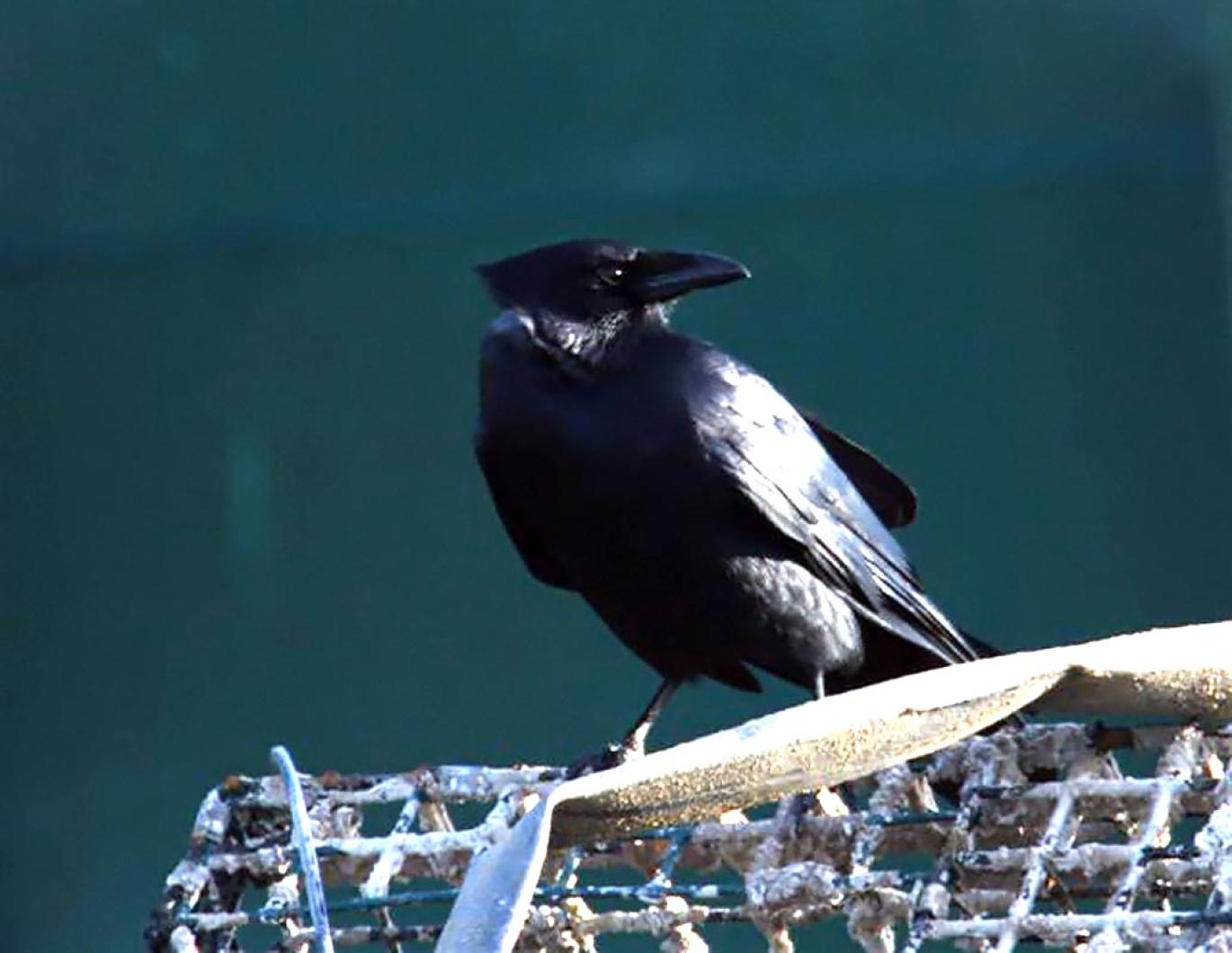Which is it, a short nasal cah-ah or a full-voiced caaw? That is the question that will help distinguish between the unusual fish crow and the ubiquitous American crow.
Why the interest? The fish crow is primarily a southern species that has ranged northward into southern New England. Yet there have been no confirmed sightings of this species on the Vineyard. Susan Whiting and Barbara Pesch’s Vineyard Birds II, the official record of birds seen on the Island, reports that one fish crow was observed on April 21, 1974. This sighting was not sufficiently documented (birders have their rules too), so this species is on their hypothetical list.
I mention all this because twice in the past week I have heard a very nasal cah-ah. On Feb. 12, I observed a flock of about 75 American crows bustling around the hospital construction area. Although I heard the cah-ah, none of the crows were noticeably smaller than the others, so I did not see a fish crow. I also heard the cah-ah call on Feb. 6, while I was walking along Norris avenue in Oak Bluffs. This time there were more than 150 American crows, but again none of them were noticeably smaller. And as most of these birds were perched in evergreens and flying only short distances between trees, I could not determine which individual was making the unique call.
Matt Pelikan has also heard the cah-ah around his house in Oak Bluffs, and he notes that none of the crows appear to be smaller.
And last fall, Lanny McDowell, Porter Turnbull, and Susan Whiting saw three probable fish crows feeding in a dumpster at Oak Bluffs Harbor and then being chased across the harbor by American crows. These three crows were decidedly smaller but the cah-ah call note was not heard.
Hearing the nasal cah-ah is not sufficient to identify a fish crow because American crows have an amazing repertoire of calls. Right now it seems likely that all of these cah-ah calls are one of the many vocalizations that our common crows make. Juvenile crows that are begging their parents for food will make a very nasal call that can have two syllables, although these calls are normally louder than the cah-ah calls I have heard.
Most likely these crows are all American crows. But it is important to pay attention to birds that appear to be doing something slightly out of the ordinary. That is how unusual birds can be discovered.
Everyone can hear recordings of fish crows and American crows by visiting birds.cornell.edu/macaulaylibrary. This free Web site is part of the Cornell Laboratory of Ornithology, and you will be able to listen to any of their 61 recordings of fish crows and 140 recordings of American crows.
Fish crows are found on Cape Cod, and I have heard that they are as close as Falmouth. My guess is that soon fish crows will be sighted and documented on the Vineyard.
Bird Sightings
Matt Pelikan has the best sighting of the week. He reports an American oystercatcher flying around the Oak Bluffs side of State Beach on Feb. 10. This species has increased so much in the past 20 years that they are now spending their winters not too far to the southwest of us, so winter sightings will become more frequent. Generally the birds nesting on the Vineyard do not show up until late March.
Gus Ben David reports that a dead long-eared owl was brought to his house on Feb. 12. This bird was found in the Quansoo area; maybe some are still alive as well. They should be hooting to establish their nesting territories now, so listen for them (and please call the bird line if you hear one.)
Gus also reports that a pair of barn owls has colonized the nesting box at his house in Edgartown. This is the first pair of barn owls he has had since the breeding population was decimated by the severe winters of 2004 and 2005. A pair of barn owls is also preparing to nest in one of the two boxes at Felix Neck. A camera is in this box, so the pair can be watched via a computer monitor in the exhibit room at Felix Neck.
Matt Pelikan and Gus Ben David both report that Eastern bluebirds are checking out nest boxes as they begin to prepare for their breeding season.
Purple sandpipers are still around. They are most frequently found on the large rocks from Lucy Vincent to the cliffs at Aquinnah. But on Feb. 6, I found four of them on the long jetty at the town beach in Oak Bluffs, and on Feb. 7, I found two of them on the rocks along the Vineyard Haven outer harbor between the drawbridge and Packer’s wharf, across the road from the town landing. I was able to get really close looks at these two birds by peeking over the cement seawall at the nearby rocks.
This weekend, Feb. 15 to 18, is an opportunity for anyone to participate in the Great Backyard Bird Count, a citizen science project of the Cornell Laboratory of Ornithology and the National Audubon Society. All you have to do is count birds somewhere for at least 15 minutes and send in your sightings. More information is available by visiting birdsource.org/gbbc/.
Remember to call the bird hot line at 508-627-4922 and leave a message with your sightings.
Robert Culbert is an ecological consultant and bird tour leader living in Vineyard Haven.




Comments
Comment policy »